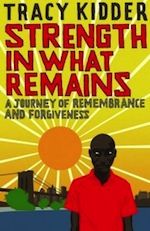
Education should not seek to create a shield that protects children and youth from emotional turmoil. Rather, it should seek to help them deploy their own shield in the face of it. Managing volatile emotions that interfere with learning takes strength. While teachers often focus on academic strength, underlying emotional strength that is the foundation of academic success is frequently neglected. The teacher who helps children and adolescents find, know, articulate, and activate their strength inoculates them against life-long stress. Strength is emotional Teflon and children and adolescents learn to self-protect in healthy ways so defensive feelings and thoughts are diffused. Strength-based emotional regulation provokes healthy feelings, thinking, and actions when negative emotions threaten to overwhelm reasoning.
Aristotle taught that emotional strength is Eudamonia – or the good spirit – and equated the balance of it with genuine happiness.
Martin Seligman proposed children and adolescents possess a signature strength that teachers can help them find and engage. The signature strength is the natural dispositional or automatic strength response that is adopted easily whether empathy or grit. And, engagement through strength is the cornerstone of happy and successful learning.
The Virtues Project goes beyond the signature strength and uses the words virtues and strengths synonymously. The project differentiates five types of virtues or strengths. The core virtue is the strength needed in a particular circumstance. The guiding virtue is the particular strength that informs decision-making. The strength virtue is the enduring strength that flows easily and effortlessly akin to the ‘signature’ strength. The challenge virtue is the strength that is targeted for improvement. The sustaining virtue is the coveted strength that is most attractive to the child or adolescent – their ideal strength.
Children and adolescents find happiness in the classroom – and the good life - by learning to self-manage their emotions by identifying and nurturing their emotional strength. In the alternative, they learn to feel the shame and guilt that stems the flow of happiness and productivity. When teachers teach children and adolescents to recognize and utilize their strengths in the classroom, they emerge as stronger learners and people. The bridge to optimal living, loving, and learning is strengths-based education.
Notes
Explore: VIA Youth Strengths Survey (10-17) http://www.viacharacter.org/SURVEYS.aspx
Visit: Strengths Explorer Test (10-14) http://www.amazon.com/StrengthsExplorer-Ages1014StrengthsFinder/dp/1595620184/ref=sr_1_1?s=books&ie=UTF8&qid=1349053713&sr=1-1&keywords=strengths+explorer
Review: Psychology for Kids Volume I: 40 Fun Tests http://www.amazon.com/Psychology-Kids-Vol-Yourself-Updated/dp/1575422832
Visit: Virtues Project and 52 Virtues Project for Educators http://www.virtuesproject.com and http://www.52virtues.com/virtues/the-52-virtues.php
Read: Kidder, T. (2010) Strength in what remains. NY: Randoem House/Profile Books


